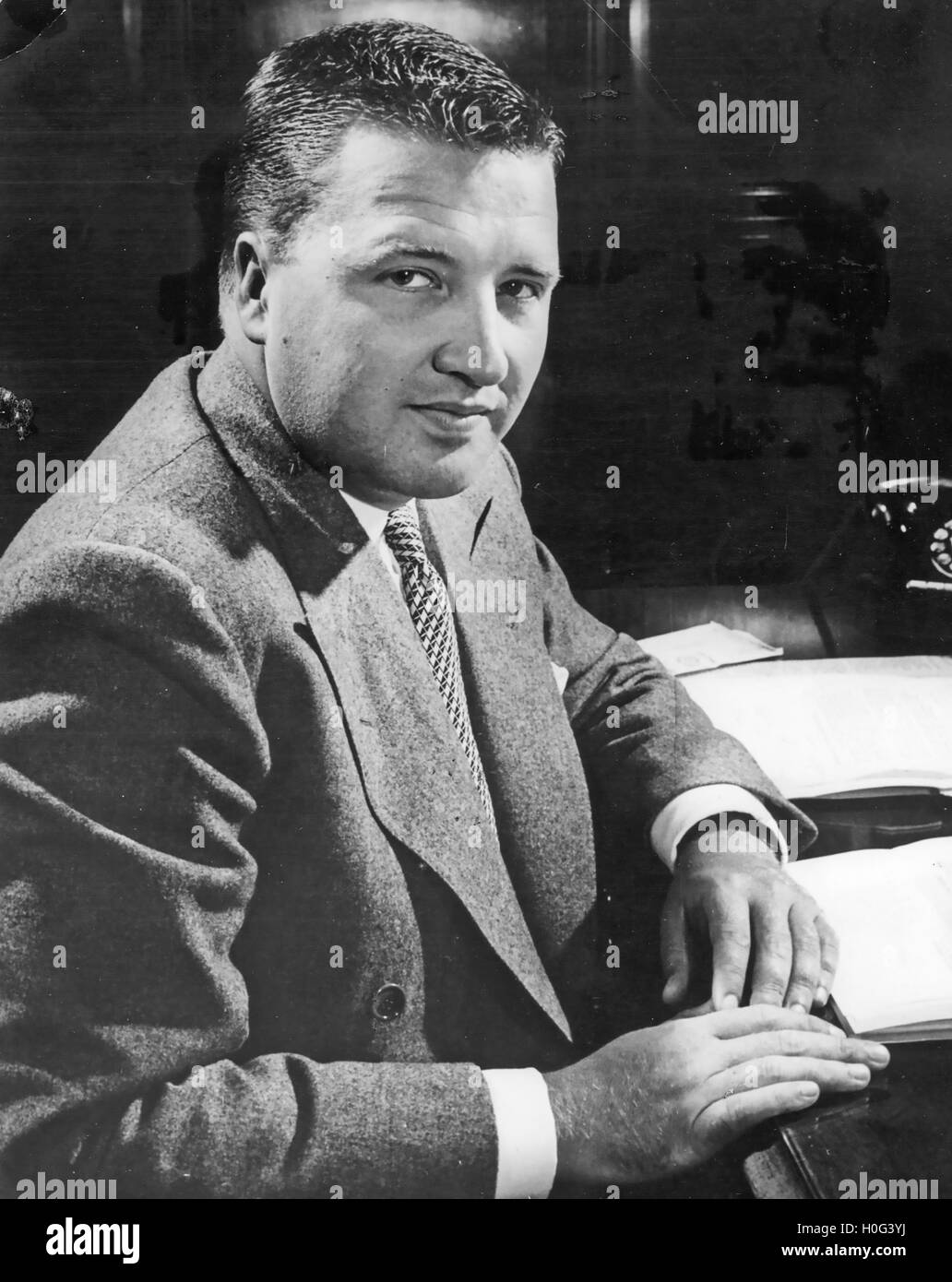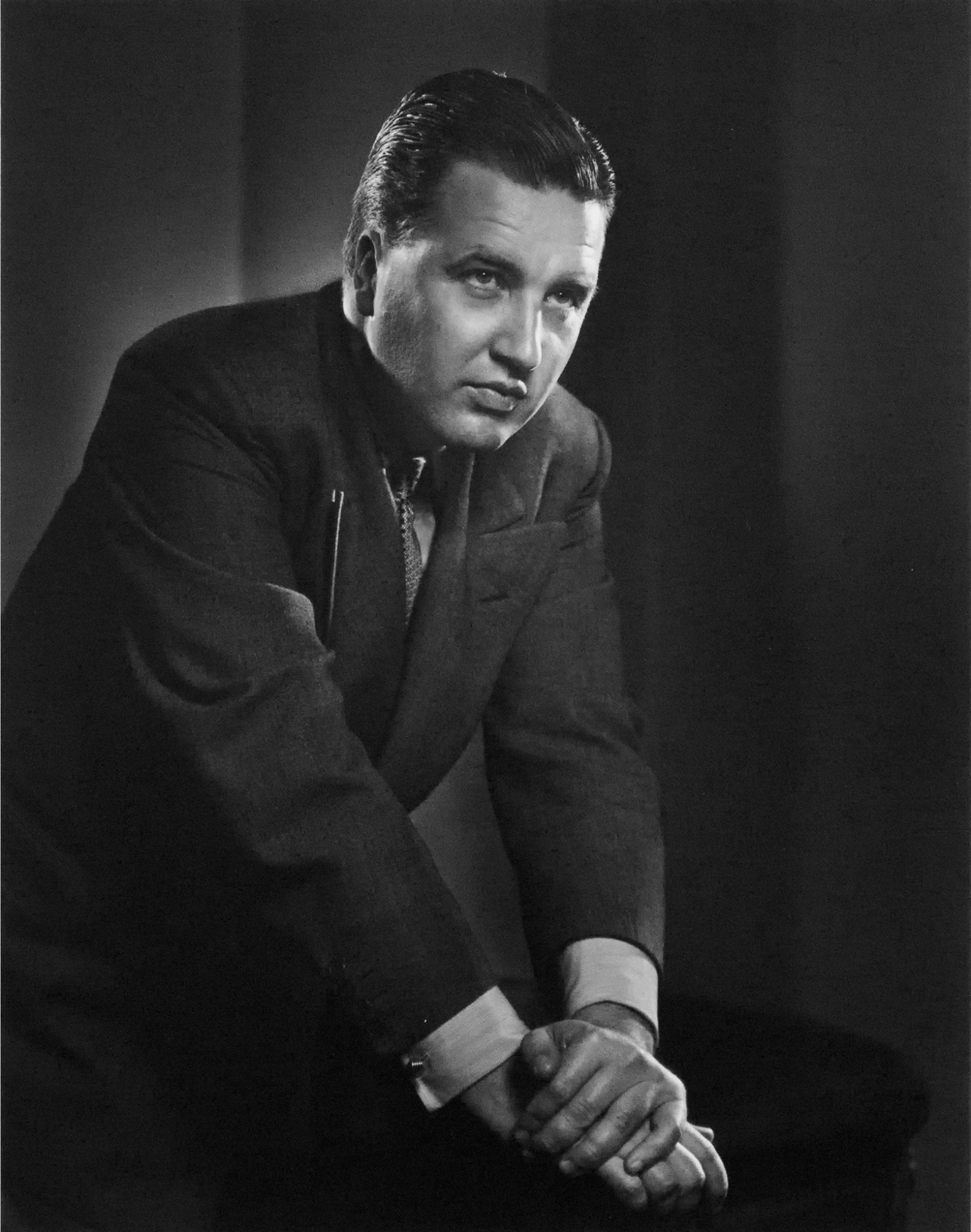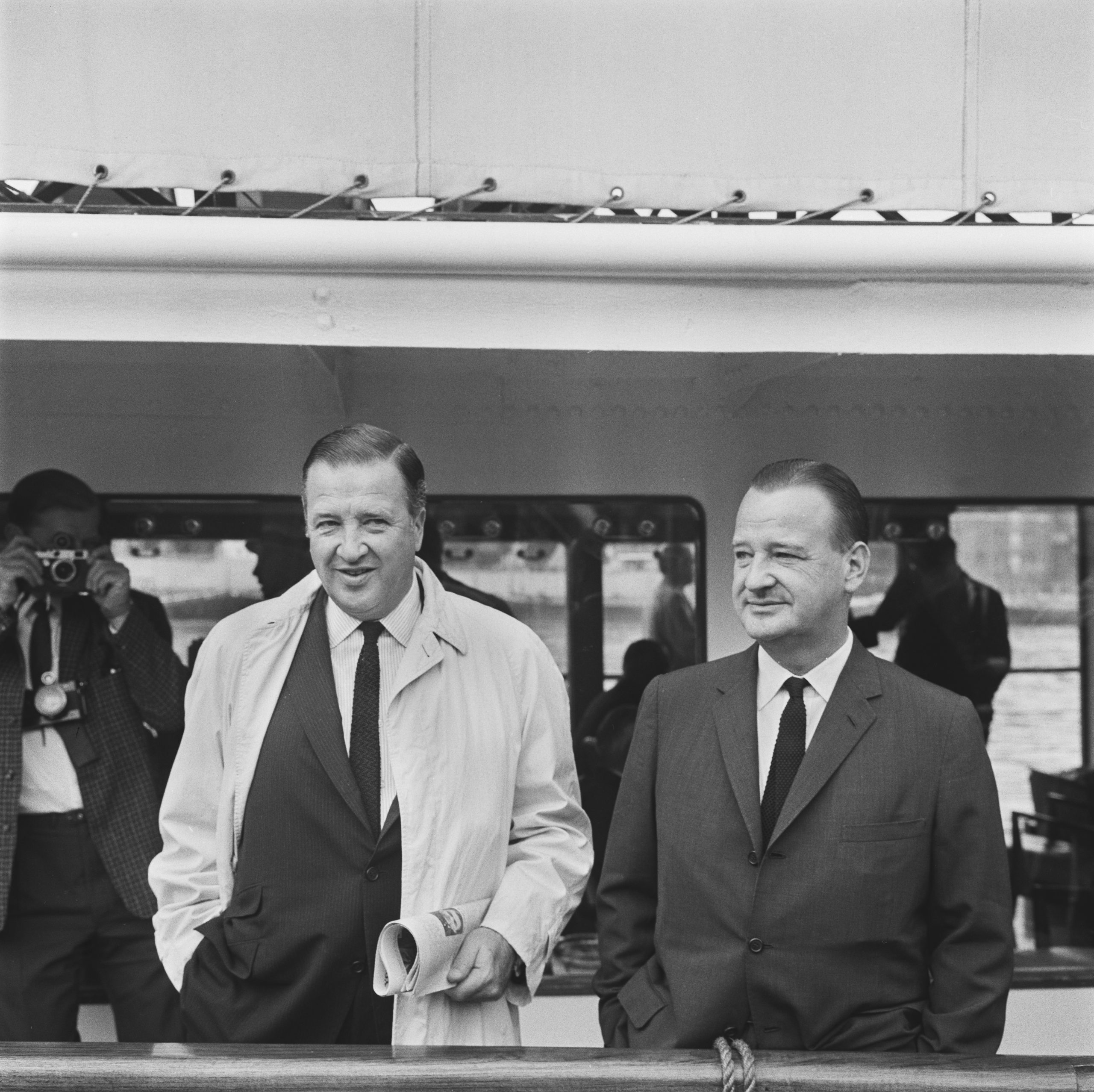Henry Ford II: A Legacy Shaping The Automotive World
When we talk about the titans of American industry, the name Henry Ford II naturally comes to mind. He was, in a way, a pivotal figure who truly shaped not just an iconic company but also, you know, a significant part of the automotive landscape for decades. His influence, you see, stretched far beyond the factory floor, touching various aspects of business and even, perhaps, the very fabric of communities, particularly in the Detroit area. It's almost as if his decisions, big and small, had a ripple effect that we can still observe today, a testament to his long tenure and, in some respects, his very personal connection to the Ford family legacy.
For a remarkable thirty-five years, Henry Ford II held the reins at Ford Motor Company, a truly long period of leadership that saw the company through many changes. This extended time at the top allowed him to implement his vision and, you know, really guide the company through different economic climates and technological shifts. It was a period, perhaps, of immense transformation, and his steady hand, or so it seems, was a constant presence in the boardrooms and, indeed, the broader automotive world. His tenure, in a way, was quite a defining chapter for the well-known automaker.
Beyond his corporate role, Henry Ford II also left a tangible mark on the physical surroundings of his home and community, particularly around the Lakeshore area in Grosse Pointe Shores. He was, for instance, involved in changes to properties, even razing a house that was located at approximately 423 Lakeshore in the 1960s. This action, you know, speaks to a certain personal involvement with the local environment, perhaps reflecting a desire to shape his immediate world just as he shaped the company. It shows, in a way, a very hands-on approach to his surroundings, which is rather interesting.
Table of Contents
- Biography and Personal Details
- Leading Ford Motor Company: A Thirty-Five Year Tenure
- Family Ties and Local Impact: The Lakeshore Legacy
- Broader Connections and Historical Threads
- An Enduring Presence in Detroit
- Questions People Often Ask
- A Lasting Influence
Biography and Personal Details
Henry Ford II, often called "Hank the Deuce," was a grandson of the original Henry Ford, the visionary who founded the Ford Motor Company. His life, you know, was inherently intertwined with the automotive giant from his very beginnings. He was born into a family that had, in a way, already changed the world, and he was destined, it seems, to carry on that incredibly significant legacy. His birth date was September 4, 1917, and he passed away on September 29, 1987. His journey through life, in some respects, mirrored the journey of the company he would eventually lead, filled with its own triumphs and, perhaps, its moments of difficulty.
His education included attending Yale University, though he did not graduate. This detail, you see, is often noted when people talk about his early life. It's almost as if his practical experience and innate understanding of the family business were, in a way, more formative for his future role. He joined the Ford Motor Company in 1943, during a very crucial time for the business, as it was deeply involved in wartime production. His rise within the company, you know, was swift, indicating a clear path to leadership that was perhaps expected of him given his lineage.
His personal life, like his professional one, was often in the public eye, given his prominent position. He was married multiple times, and these aspects of his life, you know, were sometimes discussed in the broader media. He had children who also became part of the Ford family narrative, continuing the line of a very influential American family. His story, in a way, is not just about business; it's also about the personal journey of someone born into a name that carried immense weight and, really, incredible expectations.
| Detail | Information |
|---|---|
| Full Name | Henry Ford II |
| Born | September 4, 1917 |
| Died | September 29, 1987 |
| Notable Role | Head of Ford Motor Company |
| Tenure as Head | 35 years |
| Grandson of | Henry Ford |
Leading Ford Motor Company: A Thirty-Five Year Tenure
Henry Ford II ran Ford Motor Company for thirty-five years, a truly remarkable stretch of time for any corporate leader, especially one at the helm of such a globally recognized enterprise. This long period, you know, means he oversaw a significant portion of the company's modern history, guiding it through periods of intense competition and, perhaps, considerable innovation. His leadership began in a post-war era, a time when the world was changing rapidly, and the demand for automobiles was, in some respects, exploding. He had to navigate these shifts, which was quite a task.
Under his direction, Ford Motor Company saw many strategic moves and, you know, changes in its operations. The company, for instance, continued to expand its global footprint, reaching new markets and, perhaps, solidifying its position as a major international player. He was, in a way, instrumental in modernizing the company's management structures, moving away from some of the more centralized, personal control that had characterized his grandfather's era. This shift, you see, was pretty important for a company of Ford's growing size and, really, its complex operations.
His time at the top was not without its challenges, of course. The automotive industry is, after all, a very competitive space, and there were economic downturns and, perhaps, labor disputes that needed careful handling. Yet, his enduring presence for over three decades speaks volumes about his resilience and, you know, his commitment to the family business. It was a period that saw the introduction of many iconic vehicles and, in some respects, the shaping of consumer preferences for generations. His influence, you know, was truly profound.
It's also worth noting that during his tenure, Price Waterhouse Coopers, or PWC as it's now known, has been the independent auditor of Ford Motor Company since 1956. This long-standing relationship, you see, began during Henry Ford II's leadership, which really highlights the continuity and, perhaps, the established financial oversight that was in place during his time. This detail, in a way, underscores the professional and structured environment that he helped to cultivate within the company, ensuring proper financial practices were observed throughout his long period of command.
Family Ties and Local Impact: The Lakeshore Legacy
The Ford family's connection to the Detroit area, especially Grosse Pointe Shores, is quite deep, and Henry Ford II was very much a part of this local heritage. As mentioned, he razed a house that was located at approximately 423 Lakeshore in the 1960s, which is a very specific detail that shows his personal involvement with the land. This act, you know, suggests a desire to reshape or perhaps modernize certain properties within the family's extensive holdings in the area. It's almost as if he was, in a way, curating the family's physical presence in the community, which is rather interesting to consider.
His cousin, William Clay Ford, also built a house at 1000 Lakeshore in 1958 in Grosse Pointe Shores. This shows, you know, a pattern of the Ford family establishing significant residences along this prestigious stretch of land. The proximity of these properties, in a way, speaks to the strong family ties and, perhaps, the shared desire to maintain a presence in a place that had become synonymous with their name. It's a clear indication, you see, of the family's deep roots in the region, extending across generations and, really, shaping the local landscape.
The family's legacy continues with the current generation, including William Clay Ford Jr., whom the text specifically mentions, "Of course i am talking about william clay ford jr." And his sister, Sheila Firestone Ford Hamp, is also a significant figure, described as a billionaire in her own right. She, it seems, "Gets all the attention for the restoration." This highlights, you know, the ongoing engagement of the Ford descendants with their heritage, whether through corporate leadership or, perhaps, through efforts to preserve and restore historical elements. It shows, in a way, that the family's influence is still very much alive and, really, actively shaping things today.
The family's historical impact on the community is also evident in places like Springwells Park, greenfield & rotunda, where some apartments and townhouses were originally built by Henry Ford in the late 20s and early 30s for his single, male employees to live in. While this refers to his grandfather, it paints a picture of the extensive reach of the Ford family's influence on housing and community development in the Detroit area. Henry Ford II, you see, inherited this vast legacy of community involvement and, perhaps, a sense of responsibility towards the region where the company had grown so large. It's a very tangible connection to the past, you know, and how it continues to resonate.
Broader Connections and Historical Threads
Henry Ford II's presence was often felt at important public events, reflecting his status as a major industrialist. The text mentions that "By the time it opened, young was in office to cut the ribbon with henry ford ii." This detail, you know, suggests a public ceremony, perhaps for a new building or facility, where he was present alongside a public official. Such appearances, in a way, underscored his role as a prominent figure, not just in business but also in civic life, lending his name and presence to significant community milestones. It shows, you see, his visibility and, really, his influence beyond the corporate realm.
The text also brings up an interesting anecdote about the Detroit Edison building at Warren and Livernois, with a tunnel that led to an apartment owned by Henry Ford. This story, passed down by a neighbor, is a fascinating glimpse into the personal, almost secretive, side of the Ford family's presence in Detroit. While the text refers to "Henry Ford" (implying the first one), it's part of the broader narrative of the family's deep and sometimes quirky connections to the city's infrastructure and history. Henry Ford II, you know, grew up in and operated within this very context, where such stories were part of the family's mystique, which is rather compelling.
Another historical thread from the text touches on "Henry Ford's service department run by harry bennett from the time period of." This refers to the era of Henry Ford I, where Harry Bennett was a powerful and controversial figure. While the blog post is about Henry Ford II, this reference from "My text" shows the deep historical roots and, perhaps, the complex past that Henry Ford II inherited when he took the reins. He had to navigate the legacy of his grandfather, including the more challenging aspects of his management style and, really, the people who were part of that earlier era. It's a reminder, you see, that history is often layered, and leaders often operate within the shadows of those who came before them, which is quite true.
The mention of the DSR 3865 car and the "irresponsibility of the henry ford museum" from a 1998 article also points to the ongoing public discussion and, perhaps, scrutiny surrounding the Ford name and its associated institutions. The text notes, "Happily, the story has turned happy, though the car is now a long way from it's home." This shows, you know, that even elements connected to the Ford legacy, like historical vehicles and museums, continue to be subjects of interest and, sometimes, debate. Henry Ford II, in his lifetime, was very much at the center of this public gaze, which is a lot to handle, really.
An Enduring Presence in Detroit
The city of Detroit holds a special place in the story of the Ford family, and Henry Ford II's impact there is, you know, undeniably significant. His leadership at Ford Motor Company directly influenced countless lives in the region, providing employment and, perhaps, shaping the economic landscape for decades. The decisions made during his thirty-five years at the helm had a direct bearing on the prosperity and, really, the direction of the city that was, in a way, built around the automotive industry. It's almost impossible to talk about Detroit's modern history without, you see, acknowledging his considerable role.
Even today, aspects of the Ford legacy are visible and active in Detroit. The Victory Cruise Lines, for example, has scheduled numerous stops in Detroit between May and October of this year and even more stops in 2019. While not directly about Henry Ford II, this detail from "My text" shows Detroit's continued relevance as a destination, a city with a rich industrial past, much of it shaped by the Ford family. It implies, you know, that the historical significance, partly forged during Henry Ford II's era, continues to draw visitors and, perhaps, maintain a vibrant connection to its industrial roots, which is pretty cool.
The mention of Judge Gribbs, who "later became a state court of appeals judge, and is currently retired in a detroit suburb at the age of," also subtly reinforces the network of influential individuals who were part of the broader Detroit ecosystem during Henry Ford II's time. These are the kinds of people, you see, who would have moved in similar circles, contributing to the city's legal and civic framework. It suggests, in a way, the interconnectedness of power and influence in Detroit, where the Ford family, through figures like Henry Ford II, was a central pillar, which is quite evident.
The various properties and initiatives mentioned in "My text," from the Lakeshore homes to the employee housing built by his grandfather, all contribute to a picture of a family deeply embedded in the physical and social fabric of Detroit. Henry Ford II, you know, inherited this legacy and, in his own way, continued to build upon it, making decisions that affected not just the company but also the communities around it. His story is, in some respects, a very personal chapter in the larger narrative of Detroit's industrial might and, really, its enduring spirit.
Questions People Often Ask
Many people are curious about the life and influence of Henry Ford II. Here are a few common questions that often come up when discussing his remarkable career and family legacy.
How long did Henry Ford II run Ford Motor Company?
Henry Ford II was at the helm of Ford Motor Company for a very long time, specifically thirty-five years. This extended period of leadership, you know, allowed him to guide the company through many significant changes and, perhaps, truly leave his personal mark on its direction. It was a substantial portion of the company's modern history, which is quite remarkable, really.
What kind of impact did Henry Ford II have on the Detroit area?
Henry Ford II had a very tangible impact on the Detroit area, especially through his role at Ford Motor Company, which was a massive employer and economic engine for the region. He was also involved in local property matters, such as razing a house at approximately 423 Lakeshore in the 1960s. His family's long-standing presence, you know, including properties like those built by his grandfather for employees, further cemented their deep connection to the city and its development, which is quite evident.
Was Henry Ford II connected to the original Henry Ford's "service department" run by Harry Bennett?
The "service department" run by Harry Bennett was associated with the original Henry Ford, Henry Ford II's grandfather, during an earlier time period. While Henry Ford II inherited the leadership of the company, this particular department and its controversial figure were part of the legacy of the first Henry Ford. Henry Ford II, you know, had to navigate the company's history, which included these earlier, sometimes complex, chapters, which is a big part of his story, really.
A Lasting Influence
The story of Henry Ford II is, you know, one of immense responsibility and enduring influence. His thirty-five years at the head of Ford Motor Company represent a significant era for the automotive giant, shaping its path through a rapidly changing world. From personal decisions about property in Grosse Pointe Shores to overseeing the company's global operations, his presence was, in a way, undeniably pervasive. His "sad end," as the text puts it, hints at the personal toll such a long and demanding career can take, but it does not diminish the scope of his achievements or, perhaps, the depth of his impact.
The various threads from "My text" – the Lakeshore properties, the historical connections to Detroit, the ongoing family legacy through figures like William Clay Ford Jr. and Sheila Firestone Ford Hamp – all paint a picture of a family deeply intertwined with American industry and its heartland. Henry Ford II was, you see, a central figure in this ongoing narrative, a bridge between the pioneering spirit of his grandfather and the modern, global corporation that Ford became. His life, in some respects, truly reflects the evolution of a family, a company, and, really, an entire industry.
To learn more about the rich history of the Ford Motor Company and its impact on the world, you might consider visiting the official Ford Motor Company history archives, which offer a deeper look into the company's past and, perhaps, the figures who shaped it. It's a great way, you know, to understand the broader context of Henry Ford II's contributions. You can also explore more about the Ford family's heritage and its lasting presence in the automotive world. Learn more about automotive history on our site, and link to this page Ford Family Legacy.

Henry Ford II (1917-1987) Find A Grave Memorial, 54% OFF

Henry Ford – Yousuf Karsh

Henry Ford II Net Worth - Wiki, Age, Weight and Height, Relationships